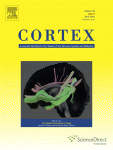I Know What You Are Going To Say – Here’s How
Wednesday, March 31st, 2010 The cognition behind completing other people’s sentences is decisively explored in the article, Predicting Syntax published in the March Issue of the Journal Language. The article argues our ability to predict what others are going to say comes from knowledge of linguistic probabilities that in turn are developed through day-to-day experience with language. We have knowledge of most probable phrases in a wide variety of contexts and use that knowledge to do many things including completing other peoples sentences.
The cognition behind completing other people’s sentences is decisively explored in the article, Predicting Syntax published in the March Issue of the Journal Language. The article argues our ability to predict what others are going to say comes from knowledge of linguistic probabilities that in turn are developed through day-to-day experience with language. We have knowledge of most probable phrases in a wide variety of contexts and use that knowledge to do many things including completing other peoples sentences.
Discovering the “probable phrases” at work in a given context should provide important insights for guiding all sorts of cognitive design efforts. A few are mentioned in a press release by the Linguistic Society of America:
“This intrinsic ability to predict based on probability has implications for language comprehension. Educators engaged in foreign language instruction might effectively focus their initial efforts on the most probable sentence constructions. Entrepreneurs engaged in marketing their products or services might use the most probable phrases in preparing their advertising messages. These research findings on linguistic probability may also be helpful in making computerized language more natural. Another practical application would be in the refinement of tools used in profiling and diagnosing those with language disorders. As noted by the authors in an interview, “Linguistic patterns are important in predicting comprehension. If we can make better use of these patterns to enhance comprehension, then we can improve people’s ability to understand one another.”
Interested to hear from readers that have suggestions for how we can discover probable phrases during the design process.








